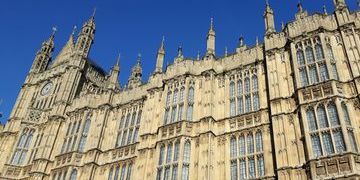Anusha Panjwani, CaSE policy fellow, digests the latest figures on departmental R&D spend.
Trends and changes in departmental spend on R&D and KT
08 Nov 2016
The government’s science budget is used for funding projects through research council grants, and for higher education bodies such as universities through HEFCE and its equivalents in Scotland, Wales and Northern Ireland. In addition to this, government departments also fund specific research and development leading to the production and synthesis of an evidence base which contributes to good policy development and evaluation. Each government department has its research and development (R&D) budget and this is used to carry out in-house research or to commission research. R&D is defined as “creative work undertaken on a systematic basis in order to increase the stock of knowledge, including knowledge of man, culture and society and the use of this stock of knowledge to devise new application.” (UK expenditure on R&D 2014).
This briefing investigates the trends in departmental spend on R&D and knowledge transfer. CaSE believes there could be benefits from more investment in and more strategic use of departmental R&D. This analysis will form part of a wider project on the use of evidence in policymaking due to be published in the spring. Particularly in light of the current challenges leaving the European Union presents in terms of policy, funding and regulatory change, it is important that the government is smarter and strategic about funding of research and procurement of goods and services to inform this process.
Big picture UK R&D spend
The year 2014 saw an increase, in constant prices, of 3% in gross domestic expenditure on R&D compared to 2013. It increased from £29.7 billion in 2013 to £30.6 billion in 2014 (Graph 1). Despite the increase in spend on R&D, total R&D expenditure in the UK in 2014 represented only 1.67% of GDP, unchanged from 2013. This was below the European Union (EU-28) provisional estimate of 2.03% of GDP (UK expenditure on R&D 2014).

Graph 1: UK Gross domestic expenditure on R&D (1990-2014)
UK government net expenditure on R&D by department.
This top-level picture masks real differences in R&D budgets across government. Some departments have made significant cuts to their spending on R&D. Two such departments which reduced their spending on R&D from 2013 to 2014 are DEFRA and DCMS, -23% and -34%, respectively. Whereas others such as the Welsh government, DFID and FSA saw an increase in expenditure over the same period (Graph 2).

Graph 2: UK government net expenditure on R&D by department % change 2013-2014
What do these cuts mean in terms of the amount of departmental R&D spend?
We compared three government departments: DEFRA, DCMS and HSE and saw a decrease or stagnation in spend on R&D (Graph 3).

Graph 3: Trend in spend on R&D from 2005 to 2014 for DEFRA, DCMS and HSE
But not all departments are following this trend and some such as the department for Health moderately increased the spend on R&D (Graph 4).

Graph 4: Trend in spend (constant prices) on R&D from 2005 to 2014 for DH
The cumulative change in UK government net expenditure on R&D by department over the period 2005 to 2014 is shown in graph 5. It increased for DH (including NHS) by £1530 million and decreased for others such as for HO, DCLG and DIFID by £462 million, £122 million and £784 million, respectively. Compared to other departments, MoD suffered a major cumulative drop of £7648 million in R&D spend over the same time period (2005-2014) (not shown in graph 5). Contributing to this overall drop is that a number of project teams moved from the development phase to manufacturing in 2011 resulting in a shift of budgets. Looking at the trends of different departmental spend on R&D compared to 2007, in graph 6 shows an increase for some departments and also highlights departments such as DGLG, DfE and HO which have suffered serious cuts to their R&D spend.

Graph 5: Cumulative change in spend on R&D by government departments (£million)

Graph 6: Percentage change in R&D spend compared 2007
We compared changes in R&D spending with changes in departmental budgets (DEL) from 2012/13 and 2013/14 (Graph 7) as this is an indicator as to whether changes to spend on R&D are proportionate to overall departmental budgets. For instance, some departments, such as DCLG, DCMS and DWP seem to have made some cuts in R&D spending but also suffered a departmental budget cut. DCLG data from 2014 reflects adjustment to budgets for changes to local government funding relating to the localisation of business rates and council tax benefit. It is positive that the above mentioned departments appear to have protected their R&D budget during times of departmental budget cuts. In contrast, BIS and NI have made cuts to spending on R&D despite an increase in the departmental budget between 2012/13 and 2013/14. DEFRA also made disproportionate cuts to its R&D spending compared to its departmental budget (-23% change in its R&D spend compared to -0.13% change in DEL) (Graph 7).

Graph 7: Departments that have made cuts to spending on R&D between 2012-13 and 2013-14
Knowledge transfer (including technology transfers) activities are designed to help the conveyance of ideas, research, results and skills between researchers, businesses and wider communities. Knowledge transfer (KT) was considered an important component of the government’s ten year science innovation framework from 2004-2014 (science and technology Third report). Successive governments have emphasised the importance of sharing knowledge and networking to keep the UK at the forefront of global innovation.
Despite its relative importance, data on KT is not available for some departments such as FCO, DfE and DWP. Information on KT by MoJ is not available as it was not surveyed prior to 2009. Departments such as BIS, DCMS, DFID showed a decrease in spend on KT in 2014 compared to 2013. Departments such as HO, DEFRA, DfT, NI and WG showed no change in KT expenditure between 2012/13 and 2013/14 and therefore not shown in Graph 8. SG showed the biggest cut its spending on KT by 40% in 2013/14 compared to 2012/13. For many departments (DH, DFID, DCMS, HO, NI, DCLG) data is available from 2007 onwards. Innovate UK was set up as an executive non-departmental public body, sponsored by BEIS in 2007 and perhaps has encouraged an increase in focus on KT. Innovate UK has encouraged knowledge transfers through the knowledge transfer network (innovate uk). It is important for departments to increase their spend on KTs to facilitate bringing together businesses, researchers, academics and wider communities to develop better products and processes, and ultimately benefit the economy and improve the lives of people in the UK. For the departments for which KT data was available from the years 2005 to 2014, the total (civil departments) drop in spend on KT is £1402 million.

Graph 8: UK government expenditure on knowledge transfer by department percentage change 2012/13 and 2013/14
An economic analysis paper published in 2008 on the optimal level of national R&D investment concludes that between 2.3% and 2.6% of GDP “maximizes the long-run impact on productivity growth and is the key to sustained productivity and technology improvements that are becoming more and more necessary to modern economic growth” (Optimal R&D investment). With the looming challenges that Brexit brings with it, the UK will need to increase both public and private R&D investment closer to its global peers, such as Germany (EU GERD). This is necessary if the UK wishes to compete in global science and innovation, and reap the resulting benefits. The CaSE policy usually refers only to public investment as this is what the Government has most control over, however, public investment and other policy levers increase private sector investment. The Government should therefore increase its own spend on R&D and enact policies that encourage private sector spend on R&D to reach 3% of GDP by 2025.
At CaSE we will continue to monitor the changing the trends in spend on R&D and KT. This initial analysis is intended to inform a wider project looking in to the strategic use of R&D across government to better inform decision making.
References for statistics used for this report:
- PESA details Table 1.11 Total Departmental Expenditure Limits(1) in real terms,(2) 2009-10 to 2015-16
- ONS R&D and KT data taken from sheets 4 and 6
Related resources

This synthesis draws out key policy implications from the findings of a report commissioned by the British Academy and CaSE. The systems-based analysis of the strengths and weaknesses within the UK’s innovation system, ‘From Research to Productivity: A Systems Analysis of UK Innovation Pathways’, was conducted by Cambridge Econometrics.

In 2024, the British Academy and CaSE commissioned Cambridge Econometrics and the Innovation and Research Caucus to conduct this systems-based analysis of the strengths and weaknesses within the UK’s innovation system.

CaSE’s comprehensive analysis of the measures that impact R&D announced in the 2025 Spending Review

CaSE’s response to the House of Lords Science, Innovation and Technology Select Committee inquiry into: Financing and Scaling UK Science and Technology: Innovation, Investment, Industry.